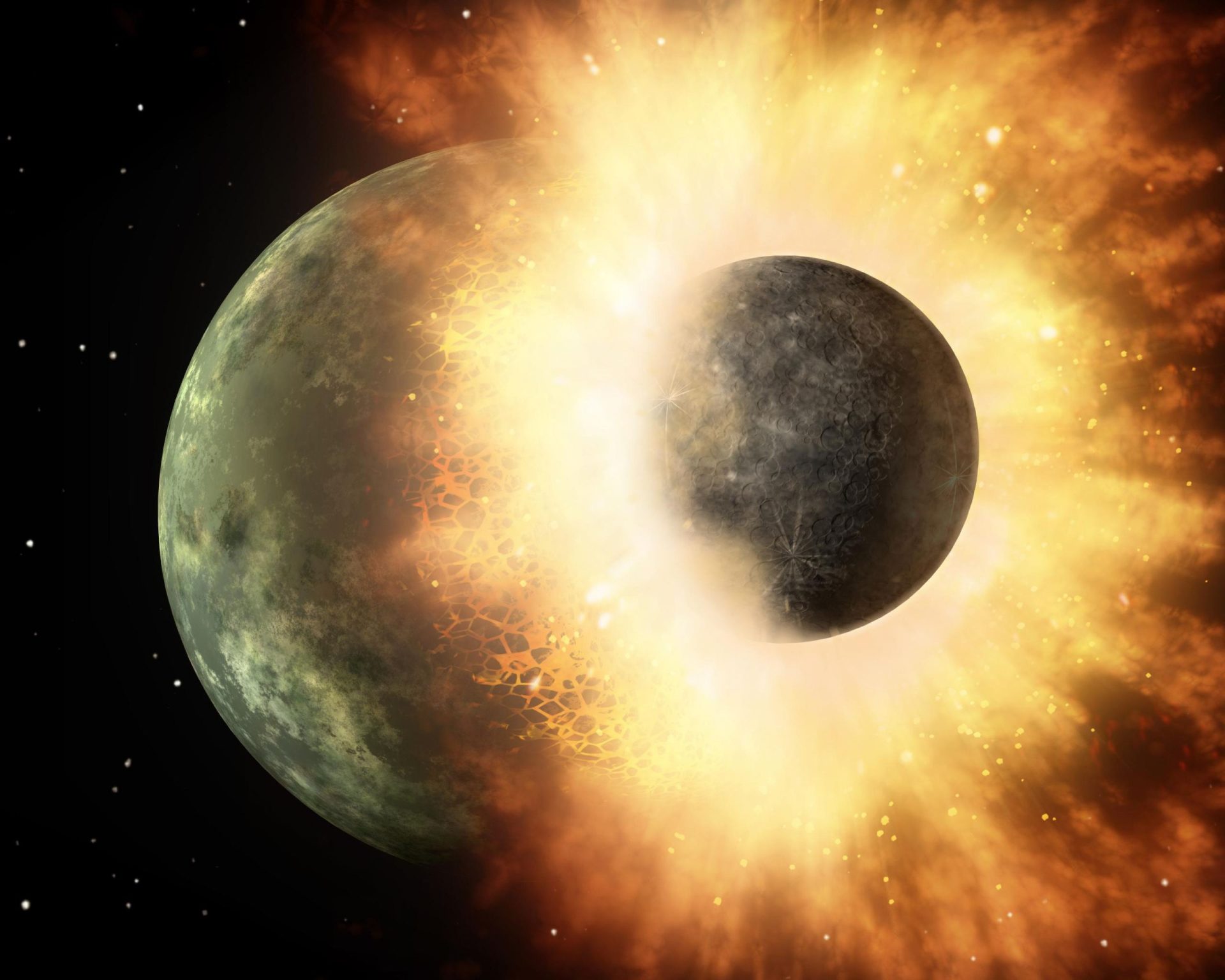Astronomers are pretty sure they know where the Moon came from. In the early Solar System, a Mars-sized object dubbed Theia smashed into Earth. This cataclysmic collision knocked a huge mass of material into orbit, which coalesced and cooled into the Moon. But establishing exactly when this occurred is a difficult task. At the 55th annual Lunar and Planetary Science Conference (LPSC 55) last month in The Woodlands, Texas, researchers proposed a new timeline of events that moves the giant impact earlier than previous predictions, at just 50 million years after the formation of the Solar System.
Dating the giant impact event is challenging because the existing evidence is conflicting, telling stories that don’t line up.
One line of evidence is derived from planetary orbits. The most likely cause of the impact is an instability in Jupiter’s orbit, which would have thrown objects like Theia into Earth’s path within the first 100 million years of the Solar System. If that orbital instability happened any later, the paths of the inner planets would have been disrupted, and Jupiter’s trojan asteroids, like binary pair Patroclus and Menoetius, (which NASA’s Lucy spacecraft plans to visit in 2033) would not remain where we see them today.
The best estimate based on these orbital observations places the impact between 37-62 million years after the formation of the Solar System. The Moon, researchers believe, would have cooled from a lake of magma into a solid surface within about 10 million years after impact.
Geological evidence, however, seems to be telling a different story. The earliest known moon rocks formed much later, appearing to have crystalized from magma at about 208 million years. Rocks on Earth, similarly, seem to have formed into a proper crust at about 218 million years.
A third dating scheme, done by measuring the decay of the element Hafnium into Tungsten, pushes the collision date early again, suggesting the Moon’s core formed at about 50 million years.
Any explanation for lunar formation needs to account for all of these evidence types.
The scenario proposed at LPSC 55 does just that. They suggest an early collision around 50 million years, followed by a 10 million-year-long period of cooling. But the Moon then went through a cycle of reheating before finally cooling again at the 200-million-year mark.
That reheating process is the key to this theory, and if it is correct, it would have been caused by tidal forces. The Moon’s orbit, according to this theory, was not yet stable around Earth, and its inclination and eccentricity increased in the years following impact, squeezing and stretching the Moon and liquifying it. These same tidal processes occur on other moons today: around Jupiter, for example, we see them creating volcanoes on Io and liquid oceans on Europa.
The cooling process was also likely slowed by violent secondary impacts, as leftover material from the initial impact slammed into the Moon over millions of years.
The team also added one new piece of evidence that strengthens the case for an early giant impact around 50 million years. Similar to the Hafnium-Tungsten decay method, the team measured the decay of earthly Rubidium sources into Strontium, giving an independent estimate supporting the early date.
This research was carried out by Steven. J. Desch of Arizona State University and A. P. Jackson of Towson University.


